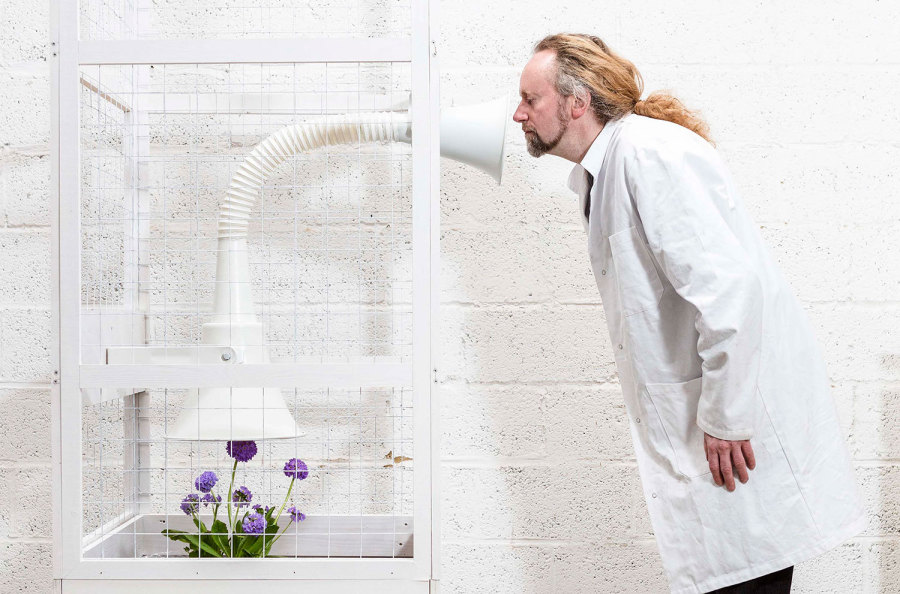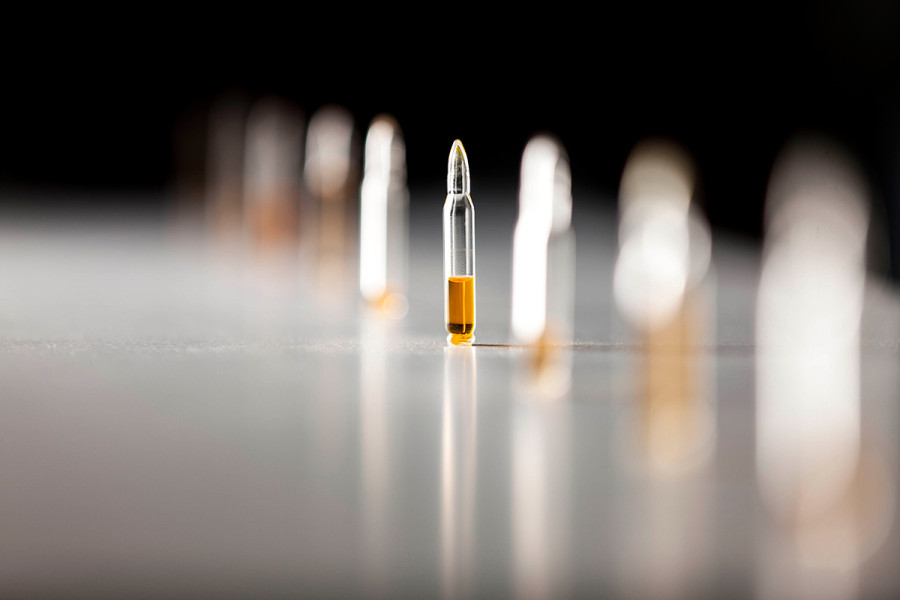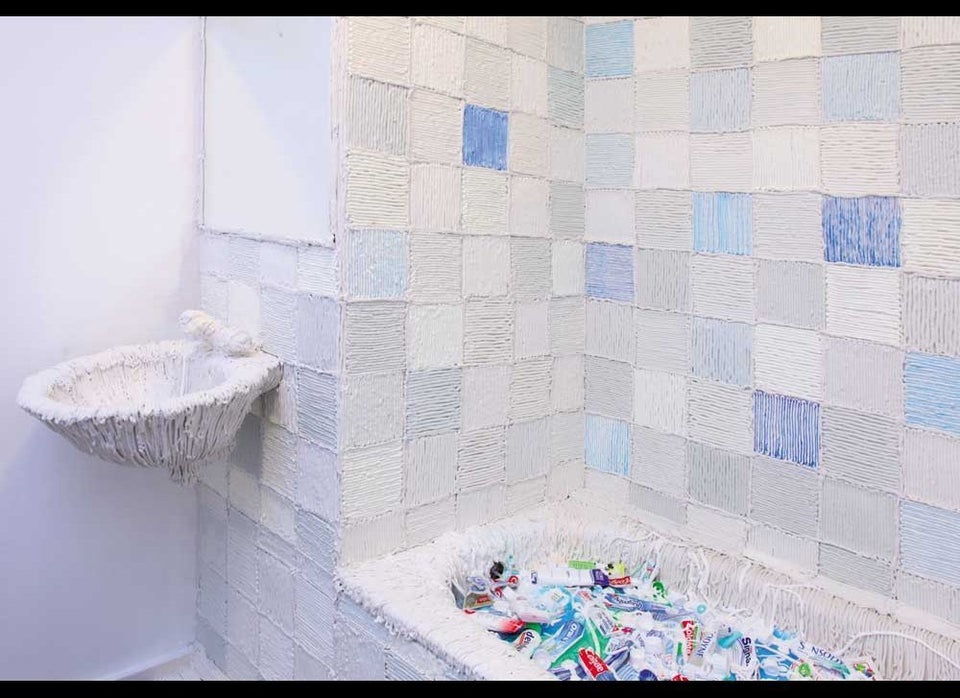When one bends over to smell a flower, one usually expects to experience a pretty limited variety of odors, ranging from sweet perfumes to the aroma of pine or wood, maybe a loamy or minty bouquet. Then there are the rarer, more foul scents associated with flora -- the ones that conjure images of dead animals, inescapable smoke or putrid trash heaps. These are the smells that interest Peter de Cupere.

Photo by Frederik Buyckx
The Belgian artist specializes in all things olfactory. From his project "The Deflowering," a Madonna statue that smelled of the "scent of passion" (read: a vagina), to his "Blind Smell Stick," a sensory aid that does pretty much exactly what it sounds, de Cupere's work falls under the curious category of "scent engineering."
Most recently, de Cupere has descended upon Cuba's art scene with his smells in tow, transforming unassuming local flowers and plants into vehicles for uber-pungent odors. Those smells include: the scents of sperm, sweat, dead bodies, money, gun powder, air pollution, a hamburger and Belgian fries. Yes, the artist has "scent engineered" plants in Havana to smell like someone's armpit, a corpse and smog. Welcome to the world of olfactory art.

Photo courtesy of Smart Pictures
What's that Smell?
The fragrances have been collected under a project titled "The Smell of a Stranger," to be presented at the Havana Biennial, beginning May 22. There de Cupere will showcase nine of his engineered plants, each equipped with its own strange scent and displayed behind bars so that the viewer cannot touch, only inhale via the help of fans. The odor art, according to the artist, attempts to reference both the ominous possibilities of gene technology as well as the the slow creep of Western culture in Cuba, a country known for its immaculate wildlife and natural identity.
So how does he turn a flower into a dispenser of pure redolence? De Cupere explained that he works with the organization International Fragrance and Flavors. The experts there use headspace technology -- a vacuum technique developed in the 1980s that captures the odor compounds present in the air around an object -- to recreate the scents de Cupere wishes to elucidate, whether it's the aroma of money or sperm.
As to how he goes from recreated smell to an odor-producing plant, he's pretty mum. "To create these scent engineered plants I used some combinations so the scent will be there to smell. About the details I can't tell much," he told The Huffington Post. "There's a lot of secret stuff hidden in it. A negative aspect from it is that the plant will not live so long. That's something scientists have to work on. Me, as an artist, I want to question the whole idea behind it."

Photo by Frederik Buyckx
The Future of Stink
De Cupere's mysterious project is therefore mostly abstract, meant to prompt the viewer -- rather, the smeller -- to think about the implications of tampering with nature. Many of his artificial smells appropriately evoke bits of Western life, like burgers or pollution. In these smellscapes, aromas associated with the U.S. in particular, quite literally take over Cuba's natural life. "Western culture is slowly creeping [into Cuba] and the capital automatically follows," de Cupere wrote in a statement for the biennial. "Cuba has a lot of nature and a lot of cultural aspects which can be exploited with bad intentions."
"I'm always working between nature, the environment and society, looking to find ways to make the world a better place," he added in an email exchange. "I think gen- and biotechnology can bring a lot of good things to the world, but people should also be careful with it ... It's not that I want to say that the U.S. is bad, certainly not. It's just saying, 'People, think and reflect. Protect your nature, but also question the positive effects of technology.'"
One of the benefits of scent engineering, de Cupere points out, is a scenario both macabre and sentimental: Imagine you could capture the scent of a loved one, he muses, and put this scent in a flower. Then you can enjoy this very emotional aroma after a person's death, as a whole new way of mourning. The future of stink is filled with possibility.
"The Smell of a Stranger" by Peter de Cupere will be on view at the Biennial of Havana, Cuba, from May 22 to June 22, 2015.
